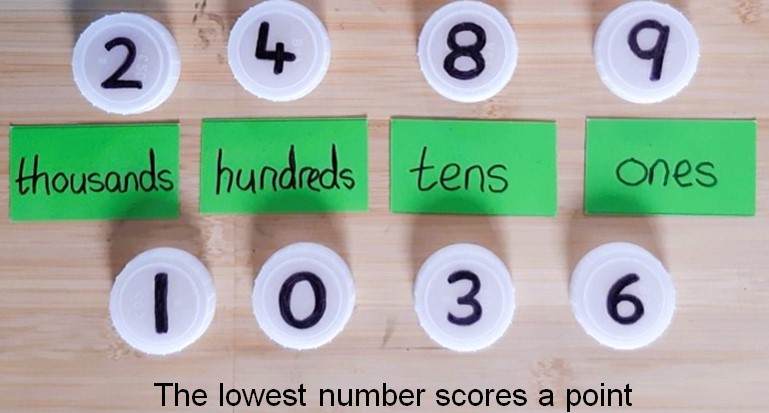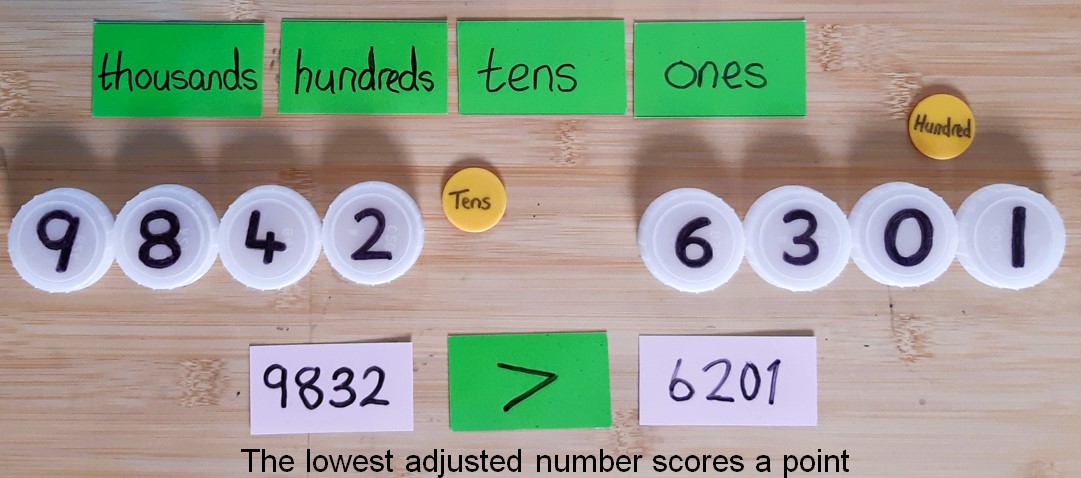Largest/smallest
A game for 2 or more players
This game focusses on place value and involves considering how the value of a digit is determined by its position in a number. It can be played to practise place value in numbers with 3 or more digits, including decimals.
Playing the variation gives practice of finding 1, 10, 100 or 1000 more or less than a number.
You will need:
Base 10 resources, place value headings or a place value grid can be used for support as required.
How to play
Take turns to take a tile from the bag (or pile), until each player has picked enough tiles to make their number (so 4 tiles if making 4-digit numbers etc).
Players arrange their digits to make the largest number possible. Players read their numbers and the player with the largest number scores a point.
Players then rearrange their digits to make the smallest number possible. A zero may not be placed in the most significant place. For example, 0479 is not valid, so 4079 would be the lowest number possible. Players read their numbers and the player with the smallest number scores a point. The first person to score 5 points wins the game.


Variation
To add extra challenge, include counters with relevant place values written on (ones, tens, hundreds etc) in the bag.
After players have made their largest number, they pick a place value counter and reduce the indicated digit by 1, recording/saying the resulting number. Scoring of these adjusted numbers then takes place.

After making the smallest number, players draw a counter from the bag and increase the indicated digit by 1 instead.
 Facebook
Facebook
 Instagram
Instagram